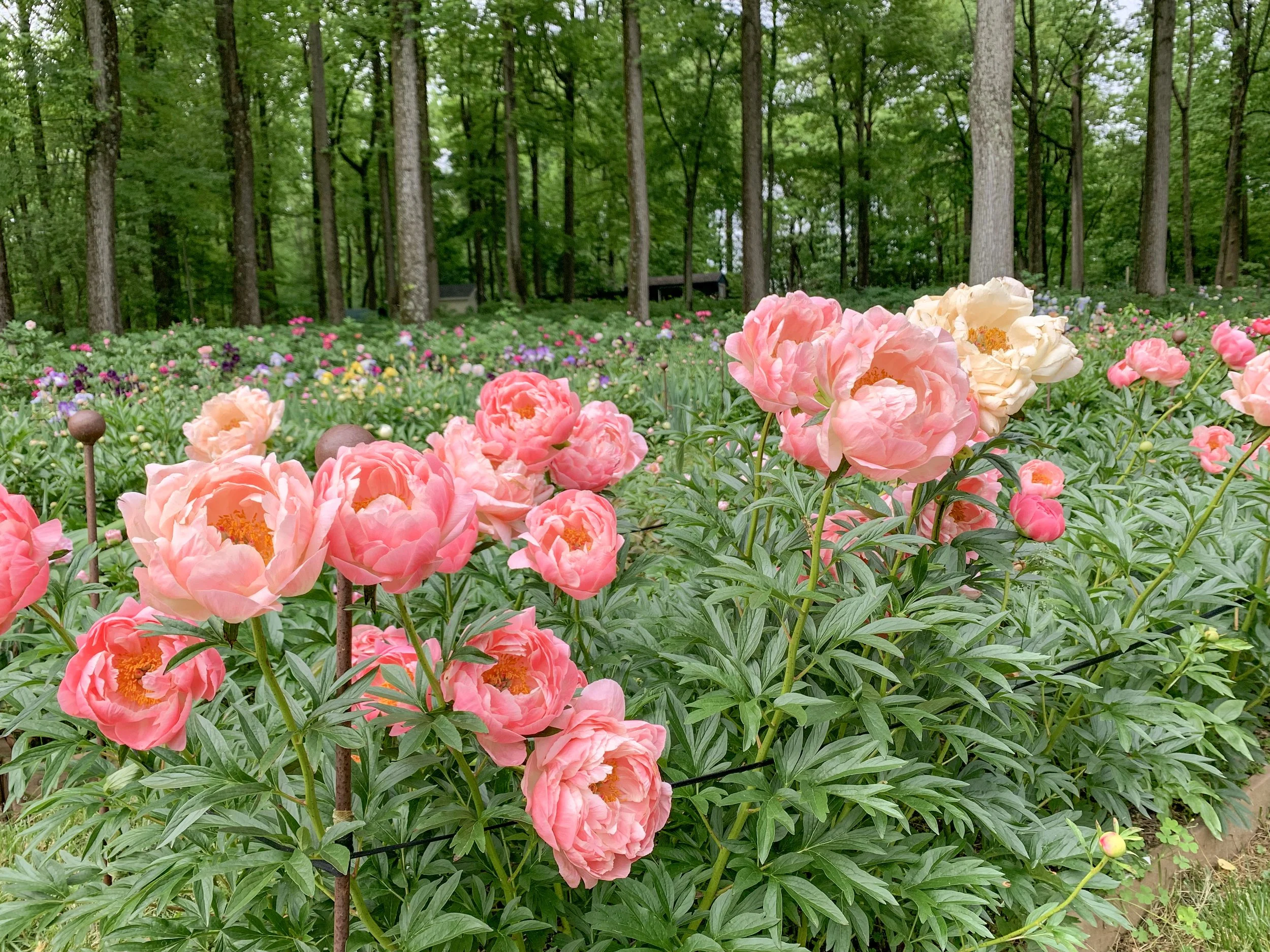frequently asked questions
What are the different types of peonies?
Herbaceous, Tree, Intersectional, Woodland. Herbaceous peonies are the most well-known type of peony and produce the most quintessential cut flowers. Learn about the different types of peonies.
Why aren’t my herbaceous peonies blooming?
Plants could be too young. Peonies are long-lived perennials that follow the adage, ‘first year roots, second year shoots, third year flowers.’ Give them time to mature.
They aren’t getting enough sun. Herbaceous and intersectional peonies need a lot of sun to flower, preferably all day. Tree peonies need mottled sun all day or a half-day of sun. Woodland peonies need to be in a deciduous woodland where they get early spring sun before the leaves come on the trees.
Planting depth. The flowering of herbaceous peonies is incredibly sensitive to planting depth - too deep and plants won’t flower, too shallow and plants will dry out and die (details on herbaceous planting depth). Do not mulch your herbaceous peonies! This will cause them to be too deep and stop flowering.
Where do peonies grow?
Peonies need winter chill to flower. They grow in Horticultural Zones 3-9 (Herbaceous peonies: Zones 3-8, Intersectional peonies: Zones 3-9, Tree peonies: Zones 4-9) Learn more about horticultural zones and peonies.
What do peonies need?
All peonies need rich well-draining soil.
Herbaceous and intersectional peonies need a lot of sun to flower, preferably all day. Tree peonies need mottled sun all day or a half-day of sun. Woodland peonies need to be in a deciduous woodland where they get early spring sun before the leaves come on the trees.
Learn more about herbaceous peony site selection, intersectional peony site selection, tree peony site selection, and woodland peony site selection.
What happened? My newly planted peony looks like it is dying.
Like all perennials, newly planted peonies need extra care. Hot summer weather can easily dehydrate a newly planted peony. Without sufficient water the leaves can wither and die making it look like the peony is dying. Know that the root remains viable and the plant will reemerge next spring. During the first growing season after planting a new peony ensure it gets a good soaking at least once a week especially in the heat of summer. Weekly soakings keep the plant from being stressed by drought as it develops its fibrous root system. Be careful to not over water. Over watering or use of foliar/overhead sprinkler systems can cause disease.
Check how it was planted and make sure it was planted to the proper depth, in the proper location, and with the proper orientation (not upside-down). Click here for herbaceous peony planting, intersectional peony planting, tree peony planting, and woodland peony planting.
If your peony was not planted in well draining soil or if it was planted in an area that flooded there is a chance your peony root has rotted. Check the root to see if it is alive and if so move it to a better location. Learn more about herbaceous peony site selection, intersectional peony site selection, tree peony site selection, and woodland peony site selection.
Check for disease. Like all living things, peonies can get diseases. Check for disease and treat accordingly. Herbaceous peony diseases, intersectional peony diseases, tree peony diseases, woodland peony diseases.
What should I expect from my new peonies? How long will it take my peony to bloom?
Peonies are long-lived perennials that take time to get established but will grow and thrive for generations. Peonies follow the adage, ‘first year roots, second year shoots, third year flowers.’ If planted in a suitable locations, peonies will continue to produce more growth and more flowers over time. Learn more about herbaceous peony growth expectations, intersectional peony growth expectations, tree peony growth expectations, woodland peony growth expectations.
I want to know more, can you help?
Our ‘Learn About Peonies’ pages are great resources. We have put a ton of time and energy into developing these pages for you. Take advantage of all they have to offer
Consider attending one of our workshops or online classes. Click here to view our current offerings.

